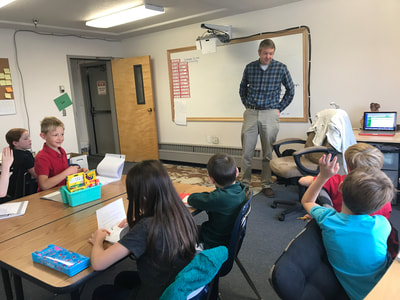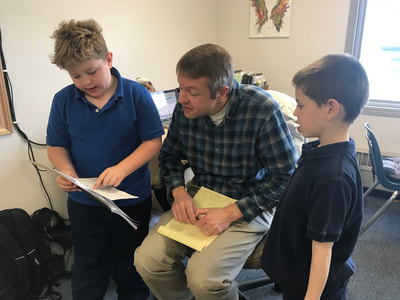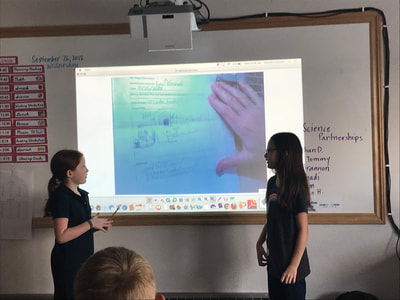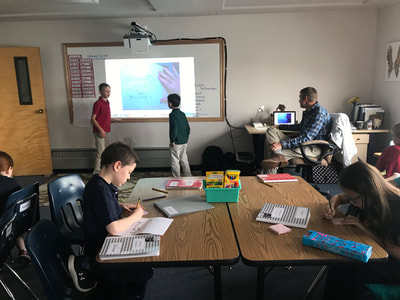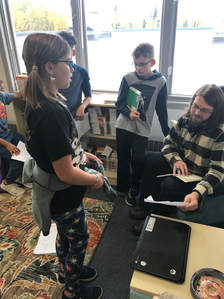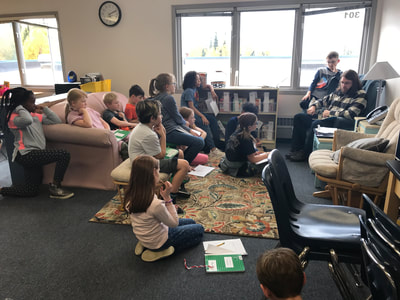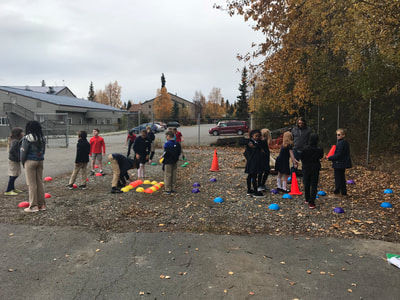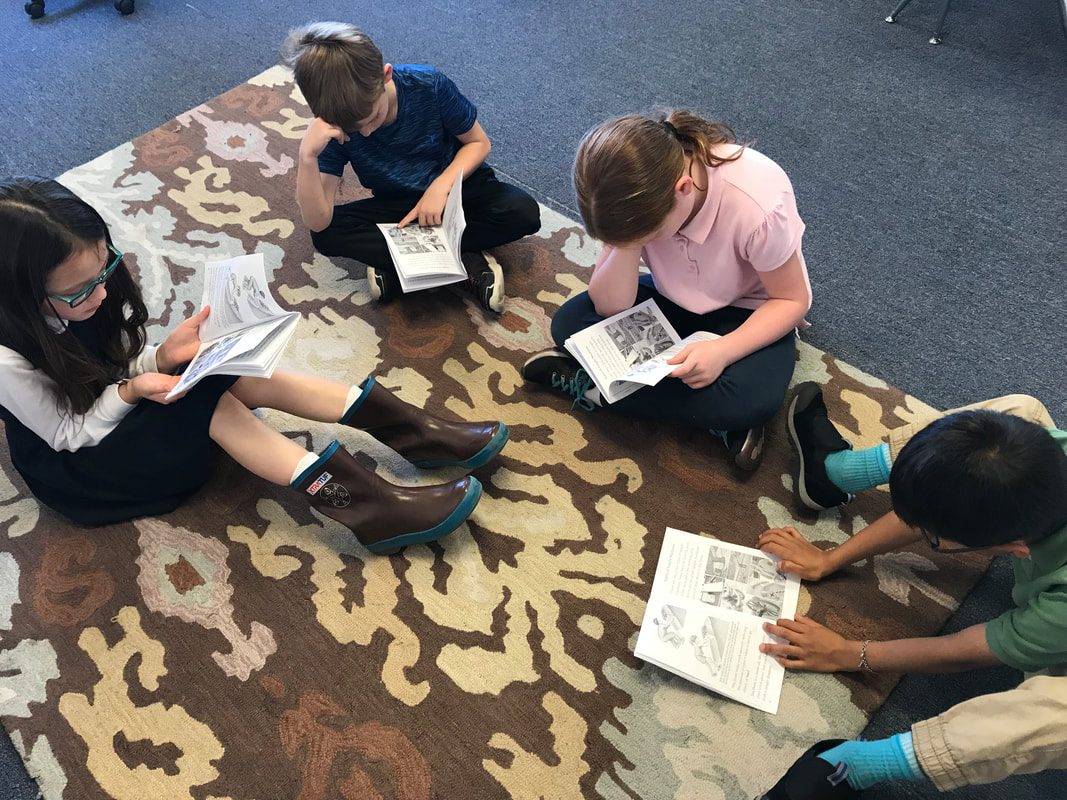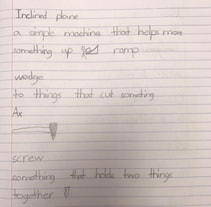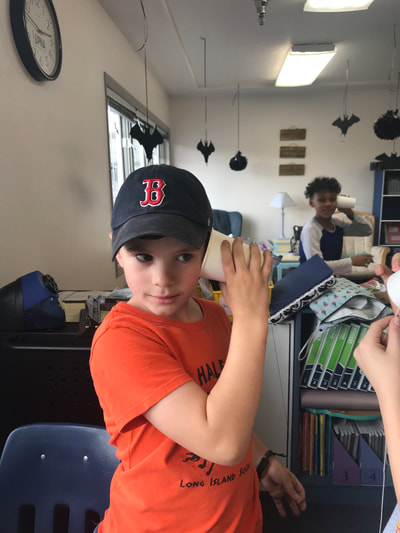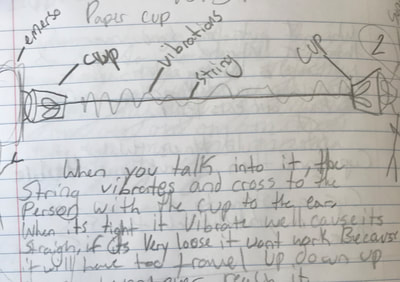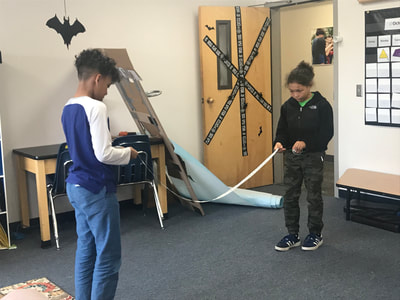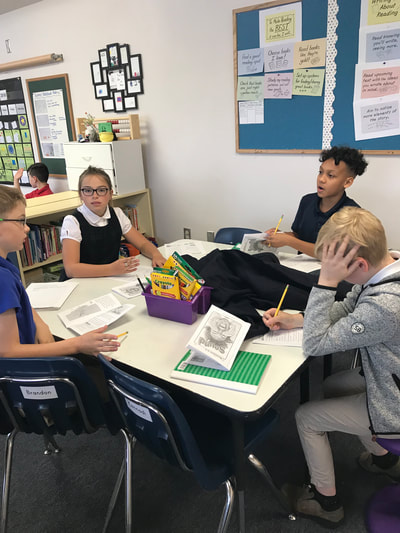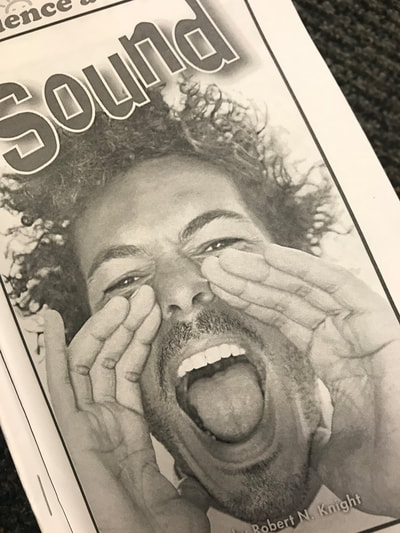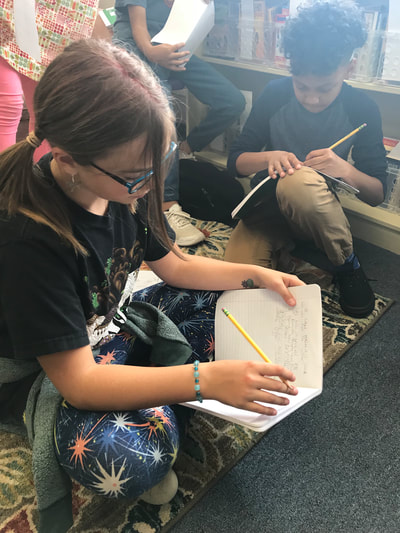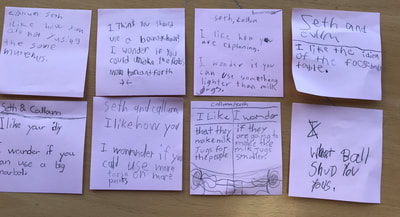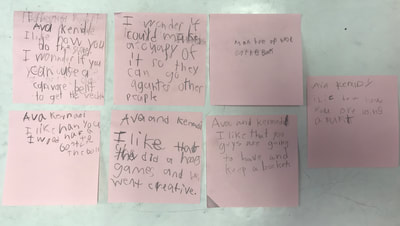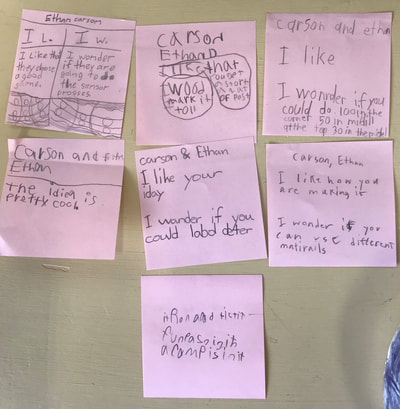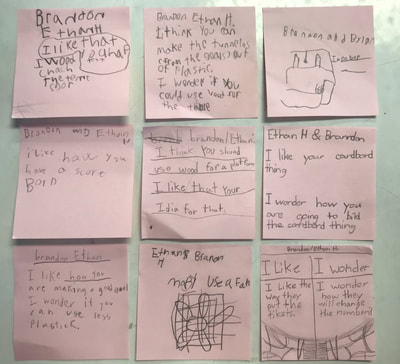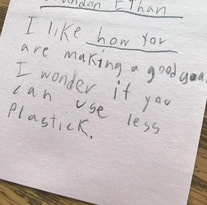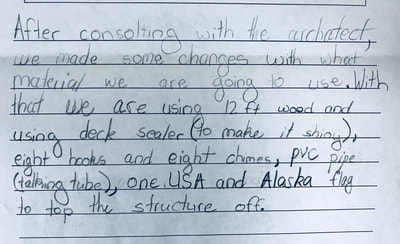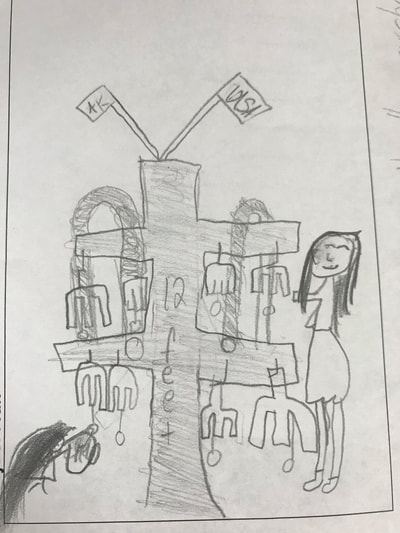If you are wondering how students learn content and skills or if you want to know more about authentic learning, then this blog entry will be worth reading for you.
Students learn from experts.
In a project-based learning unit, experts are invited to come to our classroom and listen to students’ project ideas. The learning does not just come from a single teacher. Students get to talk to real people who actually know more about the concepts they are learning in class. Students also learn about important jobs in science and how science is used in different jobs.
In third grade, Nate Hicks, a parent and a physicist, came to the classroom to talk about forces. Students consulted the expert to hear his thoughts and advice on the arcade project they are planning to build.
|
Fourth and fifth graders had the opportunity to meet Ryan Morse, an architect, who also agreed to help our class build their actual science projects. Students pitched their project ideas and visited the actual area where we’re going to build the projects to create a vision of what it’s going to look like.
|
Students learn content from books and asking meaningful questions.
In third grade, students are learning about forces and simple machines. This unit explains what work is; and introduces the seven traditional simple machines and how they function. Understanding how various machines work will help students to choose appropriate machines and use them properly.
The target standards for this unit:
NGSS 3-PS2-1. Plan and conduct an investigation to provide evidence of the effects of balanced and unbalanced forces on the motion of an object.
NGSS 3-PS2-2. Make observations and/or measurements of an object’s motion to provide evidence that a pattern can be used to predict future motion.
The target standards for this unit:
NGSS 3-PS2-1. Plan and conduct an investigation to provide evidence of the effects of balanced and unbalanced forces on the motion of an object.
NGSS 3-PS2-2. Make observations and/or measurements of an object’s motion to provide evidence that a pattern can be used to predict future motion.
Fourth and fifth grader have started learning about sound. The unit explains what sound is, how it travels, and some of the properties of sound, such as pitch and volume.
The target standards for this unit:
NGSS PS4-1. Plan and conduct investigations to provide evidence that vibrating materials can make sound and that sound can make materials vibrate.
NGSS PS4-4. Use tools and materials to design and build a device that uses light or sound to solve the problem of communicating over a distance.
NGSS 3-5-ETS1-1. Define a simple design problem reflecting a need or a want that includes specified criteria for success and constraints on materials, time, or cost.
The target standards for this unit:
NGSS PS4-1. Plan and conduct investigations to provide evidence that vibrating materials can make sound and that sound can make materials vibrate.
NGSS PS4-4. Use tools and materials to design and build a device that uses light or sound to solve the problem of communicating over a distance.
NGSS 3-5-ETS1-1. Define a simple design problem reflecting a need or a want that includes specified criteria for success and constraints on materials, time, or cost.
Students learn how to give and receive feedback.
As students took turns to present their project ideas, the rest of the class listened and gave kind, specific, and helpful feedback. The feedback enabled students to reflect on their project and revise for better ideas.
At PNA, learning does not only happen in a traditional way. Teachers are not the only source of information or lessons. Students learn from other adults, from other students, and from their own reflection.

